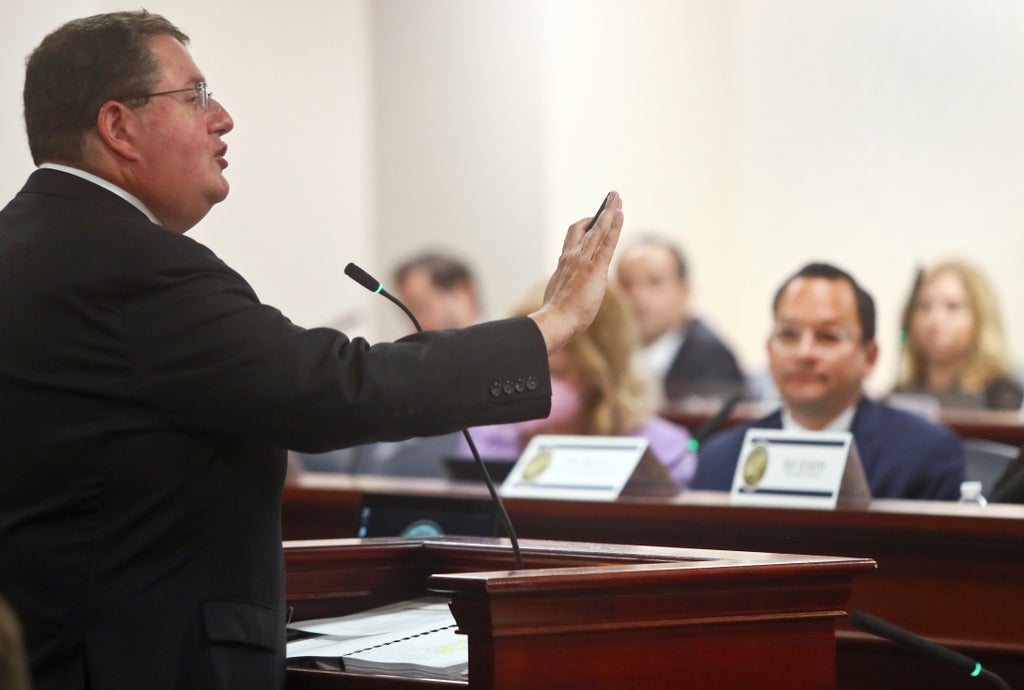
Florida Republicans have compared a protest against a newly drawn congressional map that dilutes Black voter strength in the state to the violent attempt to overturn the results of the 2020 presidential election on 6 January, 2021.
On 21 April, a small group of mostly Black Democratic legislators staged a sit-in protest in the middle of the House floor, singing and praying and briefly delaying votes during a special legislation convened by Republican Governor Ron DeSantis, whose map eliminates two of the state’s four districts represented by Black Democrats and creates four more districts that lean Republican.
State Rep Randy Fine told Florida’s WPLG television that “what happened on the floor of the Florida House was far worse than what happened in Washington on January 6,” when a mob fuelled by false “stolen election” narratives stormed the US Capitol, injured law enforcement and threatened members of Congress to reject Joe Biden’s presidency. More than 800 people have been charged, and at least five police officers died in the days and weeks after the attack.
Mr Fine and two other Republican state legislators – Spencer Roach and Alex Andrade – called Democrats’ protest an “insurrection.”
“Constitutional officers that took an oath to protect the constitution attempted to prohibit the Florida legislature from getting its business done, from actually creating the ability for Florida to send congresspeople to Washington DC,” added Mr Fine, who claimed that “21 million Floridians were disenfranchised because of sedition on the part of these Democrats.”
He told Insider: “There’s no question [that] January 6 was a bunch – was a few hundred clowns who acted like idiots in the Capitol. Nothing was ever at risk. These are actually elected members of the legislature attempting to impede its function. It’s far worse. These are constitutional officers who’ve literally violated their oath of office.”
The latest congressional map is among the last during a contested redistricting cycle across the US, following the once-a-decade process of redrafting the nation’s political boundaries based on US Census results, and headed into 2022 midterm elections that will determine the balance of power in Congress.
But for the first time in decades, states are drafting their political boundaries without critical protections from the landmark Voting Rights Act of 1965, after the US Supreme Court invalidated a requirement that changes to voting rules from states with histories of discrimination be approved by the US Department of Justice.
Florida state legislators initially passed maps that still included Republican gains, but the governor pledged to veto both of them.
The nation’s third-largest state gained one congressional seat in 2022 because of its growing population, for a total of 28 seats in the US House of Representatives.
Governor DeSantis’ map dismantles a North Florida seat currently held by US Rep Al Lawson, a Black Democrat, and is likely to flip a Tamp Bay-area seat held by Democratic Rep Charlie Crist, who is running for govrrnor. Another district in central Florida, held by retiring US Rep Stephanie Murphy, also is likely to flip to a GOP representative.
The new map is likely to face legal challenges from voting rights and civil rights groups arguing that it violates the state’s Constitution and the federal Voting Rights Act’s prohibition against racial gerrymandering.







